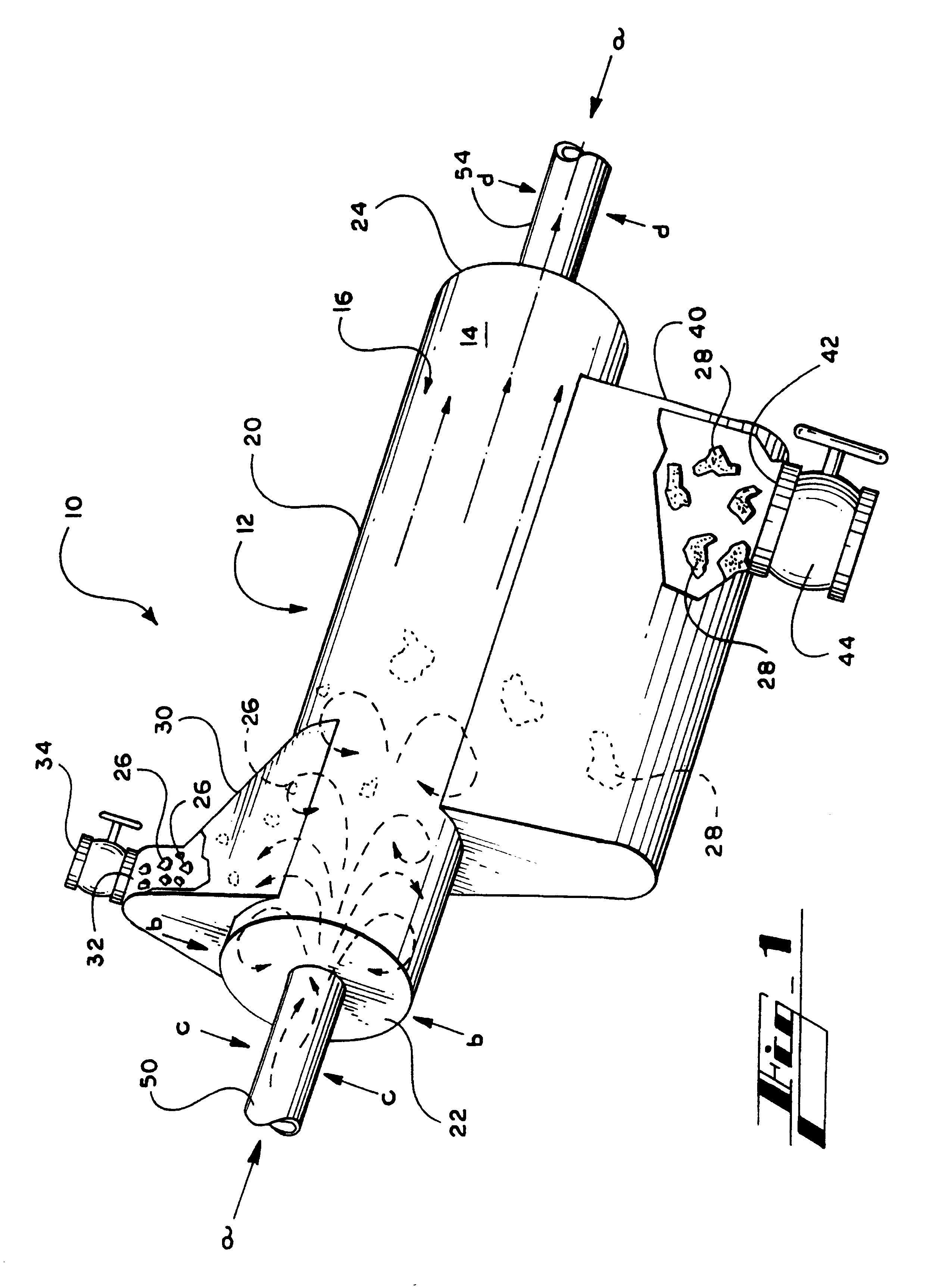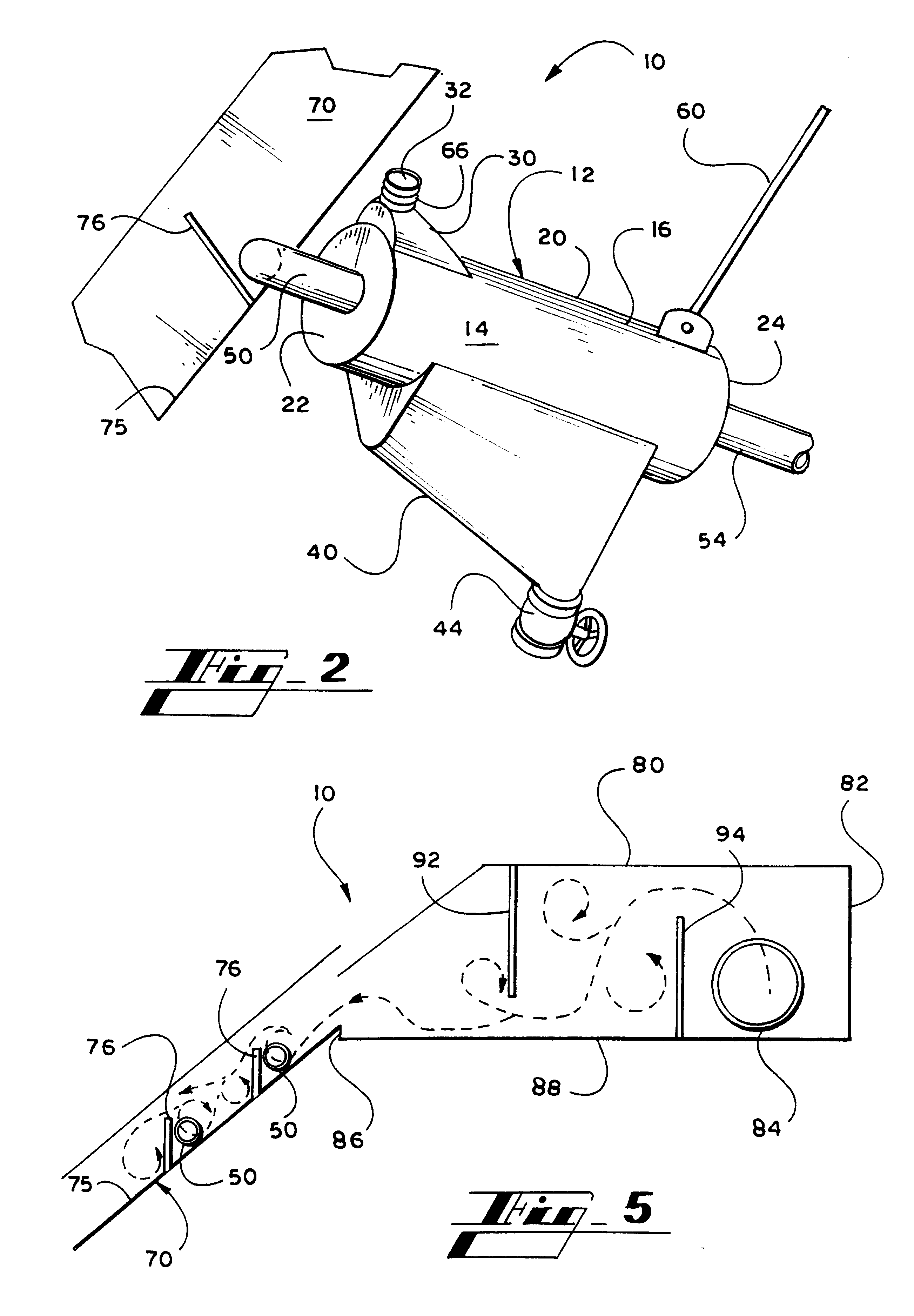Decontamination apparatus
- Summary
- Abstract
- Description
- Claims
- Application Information
AI Technical Summary
Benefits of technology
Problems solved by technology
Method used
Image
Examples
Embodiment Construction
An apparatus for decontaminating aqueous paper pulp is constructed as an elongated, cylindrical cell about 16 inches in length. The cell has an exterior surface and an interior surface defining a pulp decontaminating chamber about 4 inches in diameter. The apparatus also provides an enclosed light contaminate collection hood on the upper exterior surface of the decontaminating cell, which is in fluid communication with the pulp chamber. The hood has an upper port about 1 / 2 inch in diameter for continuously purging light contaminates therethrough.
The cell also has a heavy contaminate collection trough on the lower exterior surface. The collection trough is in fluid communication with the pulp chamber, and has a lower port and a valve for selectively purging heavy contaminates therethrough about 1 inch in diameter.
Pulp is provided to the decontaminating chamber under head from an inlet tube at the upstream pulp receiving end and permitted to flow downstream through the chamber under g...
PUM
| Property | Measurement | Unit |
|---|---|---|
| Flow rate | aaaaa | aaaaa |
| Length | aaaaa | aaaaa |
| Ratio | aaaaa | aaaaa |
Abstract
Description
Claims
Application Information
 Login to View More
Login to View More - R&D
- Intellectual Property
- Life Sciences
- Materials
- Tech Scout
- Unparalleled Data Quality
- Higher Quality Content
- 60% Fewer Hallucinations
Browse by: Latest US Patents, China's latest patents, Technical Efficacy Thesaurus, Application Domain, Technology Topic, Popular Technical Reports.
© 2025 PatSnap. All rights reserved.Legal|Privacy policy|Modern Slavery Act Transparency Statement|Sitemap|About US| Contact US: help@patsnap.com



